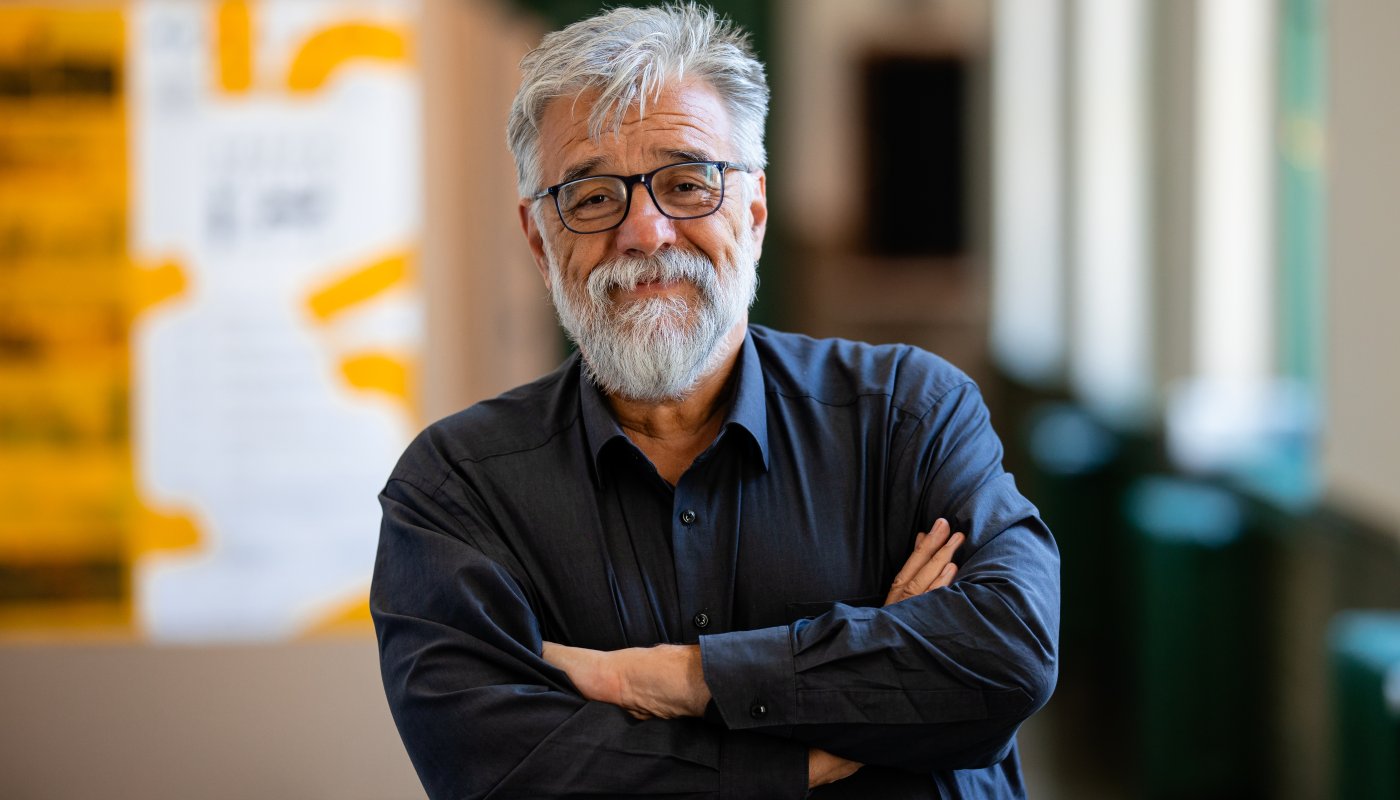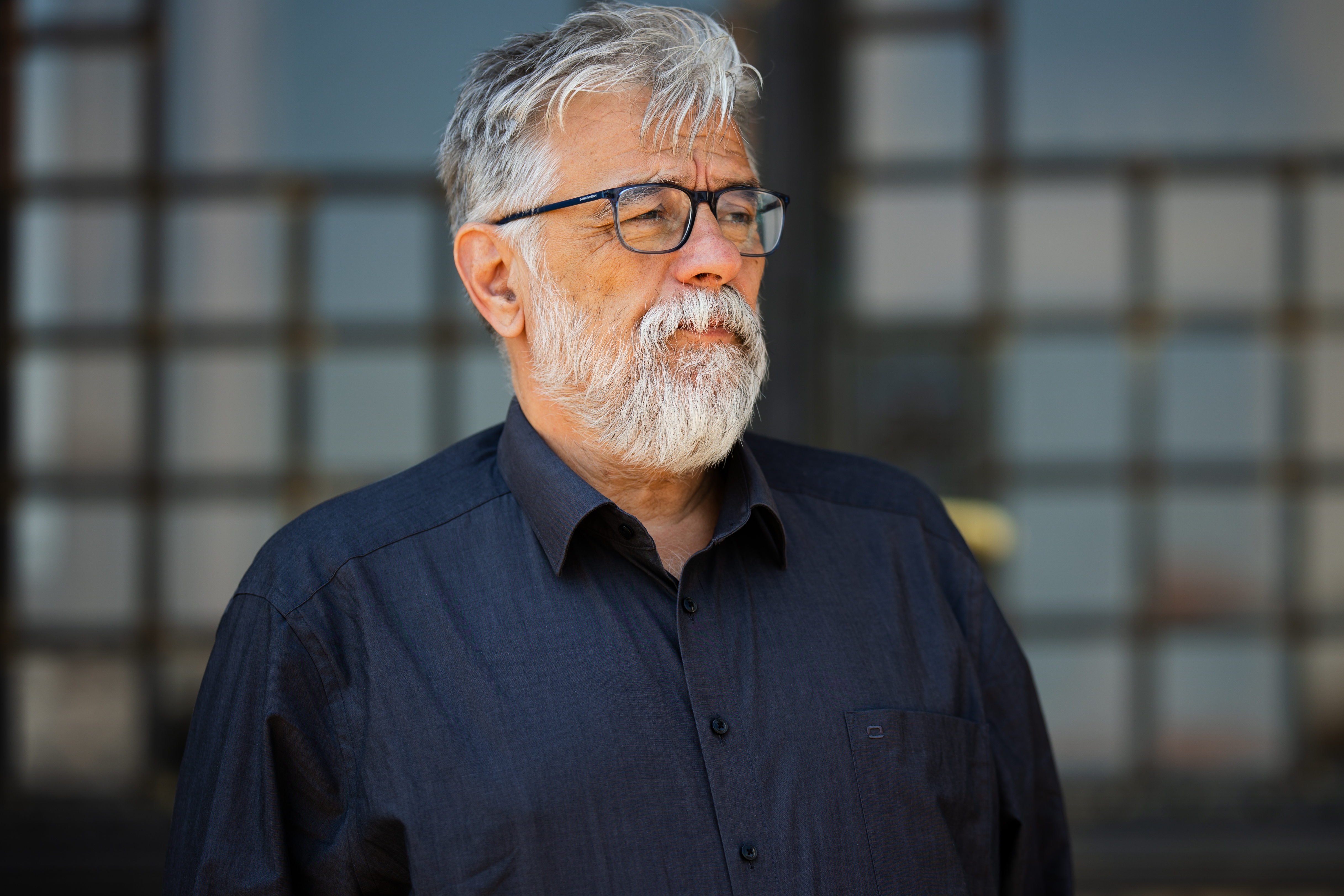News feed
Sustainable future: renovation instead of construction
2024. 06. 20.
We asked György Alföldi, the dean of BME’s Faculty of Architecture, about architects’ role in protecting the environment and the faculty’s joint projects at the university.
“The BME’s degree in architectural engineering was one of the first Hungarian diplomas to be recognized in the European Union without any limitation, and our diploma in architectural engineering is accepted all over the world. Architectural engineering is both an artistic and a technical activity. The traditional strength of our training is the balance of these two: in addition to mastering the technical and engineering disciplines, the development of artistic creativity is equally important in our programme. This dual nature makes it stand out from the list of average diplomas and is relatively rare even in international comparison, as in most architect training schools the weight of technical subjects is insignificant, while in others the predominance of those suppresses design training. I usually say that we are the most artistic engineering and the most engineering art faculty at the Technical University,” said dean György Alföldi in his summary of the essential information about the faculty at the beginning of the interview.
Architecture had different jobs in different periods in history. After the construction of castles, cathedrals and apartment buildings, in the last century architects had to find solutions to serious housing problems with the panel buildings. In your opinion, what is the most important task of architecture in the 21st century?
I consider adapting to climate change and sustainability to be very important. The construction industry can be environmentally friendly by primarily switching from demolitions to renovations. Just to name a few examples, the cities of Brussels and Amsterdam no longer issues demolition permits. Our job is to find a place for every built element as much as possible to preserve the energies invested in them, which is one of the bases of carbon footprint calculations. In one of my design courses, we looked at two office buildings in Budaörs that had been vacant for 10 years. Our motto was “adaptive reuse”. Six of our students chose the task of trying to give a new role to the abandoned buildings, and with this in mind, we planned the new function together and designed the new structures of the buildings with that in mind while preserving as much of the existing buildings as possible and choosing materials and structures to work together with the old ones.
The construction industry is one of the largest waste generating industries. Buildings account for a significant percentage of CO2 emissions. What can today's students of the faculty do in the interest of tomorrow?
The construction industry makes a living from constantly wanting to create new things. We are not at the level of sustainability and taking into account the effects of climate change that would lead us to realize that there are already more things (buildings) in the world than we need. Today, construction and demolition waste accounts for 46% of the total amount of waste generated, and it’s been on the increase again since 2016, which is a concern. If we look at the commitments of the construction industry to the future of our plant, we should not be building anything at all.
If we look at the commitments of the construction industry to the future of our plant, we should not be building anything at all.
The operation and energy consumption of buildings around the world is responsible for a significant percentage of CO2 emissions. Architecture alone protect the natural environment with all the different stakeholders involved in this process: the owner, the designer, the contractor and the manufacturer, as well as the authorities as representatives of the public since private construction is also a “public issue”. But my specific field of expertise, that is urban development, is another stakeholder that decides how our living spaces are built and what is constructed on the empty plots of land. Everyone in this ecosystem has their own interest, which does not always coincide with the drive to protect the environment.

Our job here at the Faculty of Architecture is to raise awareness among our students for sustainability, to lay the foundations for a responsible and climate-positive mindset, and to formulate very carefully and very accurately to the other stakeholders of a construction project why we demolish or build something. It is our responsibility to draw the attention of the builders to what must be demolished and what can remain, and to influence their decisions. Of course, there are many arguments in favour of each and every new building, as we can give a new one a thicker thermal insulation, better power supply and better spaces. However, if we also look at the carbon footprint of a demolition plus construction, especially if the demolition contains a significant amount of concrete, we are incredibly far from the carbon footprint that we should strive for.
Preferably not to demolish anything – does this also apply to panel buildings that were originally designed for a life span of 50-60 years?ek?
When the construction of the panel buildings started, the experts of the time said that they would be planned for 50 years, and then they would have to be renovated. We were afraid that they would fall apart, but now we know that it is just the other way around: even if we want to, we cannot disassemble them, these structures are so sturdy. Demolishing them is a huge challenge. My experience is that it is not the support structure that breaks down, but the power supply and engineering system that become obsolete. Managing and renewing them is the real solution. The apartment floor plans show very clear engineering thinking. These housing estate floor plans are often better than those in today’s residential parks, where marketability seems to be the overriding principle. The public spaces of the housing estates can be managed and utilized better by the municipalities together with the residents. I am convinced that the housing estates will stay with us for a long time and maybe they will create more of a community housing than the residential parks, as the fencing off is about me being able to go in, but you, who do not live here, cannot.
As you mentioned at the beginning of the interview, architectural engineering is both an artistic and a technical activity. What is the advantage of being close to other faculties of the Technical University?
We have several projects spanning over multiple faculties. I am very happy to mention one of my personal projects, which allowed three faculties to work together. Based on the idea of my doctoral student colleague, Júlia Pokol, we started to recycle the caps of pet bottles and use them as building materials. Following up on the idea and with the help of the staff of the Faculty of Polymer Engineering of the Faculty of Mechanical Engineering, we prepared a powder and then pressed it. It turned out that this building board cannot be used yet because it is combustible. We then managed to involve researchers from the Faculty of Chemical Technology and Biotechnology, who managed to make our new building material non-combustible. Finally, this material was used as a prototype on the building standing in Déri Miksa Street in Budapest’s 8th district.

With the Faculty of Civil Engineering, we usually dream about the reconstruction of the historic campus courtyard of the BME, the use of environmentally friendly technologies, water permeable pavements, or the collection and utilization of rainwater from buildings and the creation of rain gardens. So we want to not only talk about climate awareness, but also take practical steps to achieve it.
When renovating the roof of the Central (K) building, it would be good to find a solar panel solution, which could significantly reduce the environmental impact of the building. Together with the Faculty of Transportation Engineering and Vehicle Engineering and the Faculty of Electrical Engineering and Informatics, we participated in the development of an EU project proposal. In collaboration with the municipalities of Budaörs, Budakeszi and Törökbálint, we proposed the development of smart public transport for researchers, the coordination of different modes of transport, including cycling, and we participated in the community planning branch. The Technical University has great potential to solve interdisciplinary tasks with the knowledge available here. In addition to teaching engineering and creating artistic works, the importance of the Faculty of Architecture is its impact on the social side of sustainability changes; next to us, perhaps only the Faculty of Economic and Social Sciences is closer to the human side of sustainability. Architecture responds to the needs of society and creates its creations in dialogue with society in response to the changes taking place. In my opinion, the service nature is increasingly important also within architecture, and the role of services is increasing instead of the material world in achieving climate adaptation.
The BME has great potential to solve interdisciplinary tasks with the knowledge available here.
In my opinion, the service nature is increasingly important also within architecture, and the role of services is increasing instead of the material world in achieving climate adaptation.
Going back to the topic of sustainability, what do you think are the greater reserves: in developing new building materials or modernizing operations?
I think that we still use a lot of building materials that require a lot of energy and many irreversible processes, such as cement production. One of our departments is researching ways to reduce cement use, and by optimizing the thickness of the structures, significant environmental footprint reduction can be achieved. The processes of the world also show that the role of services is increasing. Today, you basically get your mobile for free just so that you have more and more services to buy. I think this will also affect cities and architecture. Construction sites will be restructured; for example, more and more places to rent will be concentrated next to public transportation opportunities, and buildings will become more flexible. Everyone will only rent and operate as much space as they need at that time. I've also heard stories that you can rent a facade for years! During the design training at the faculty, we also tried to build houses that are created by assembling pre-fabricated elements like Lego blocks, according to the customer's needs. The architect and the “owner” or service user put together the house together, which they can use for up to 15 years or as long as they need it.
Adapting to new needs within old walls is not an easy task.
Yes, here are our beautiful university buildings constructed at the very beginning of the 20th century, built according to the educational needs of the 19th century. And it would be really good if we could follow the changes in educational methodology by shaping the interiors. How will we be able to align the building with these changes? Today, these beautiful Hauszmann classrooms have the atmosphere of a science grammar school, while we increasingly need studios suitable for group work and more flexible places. Today’s architectural education buildings already provide many more studios and various usable spaces. With help from external sponsors, the faculty is now trying to turn one of our lecturer halls into a full-day student space, where students can organize all kinds of things between 6AM and 10PM, and operate it themselves. This is what we are working on, but in the current financial situation, we need to seriously consider what we are spending, which is why we are trying to involve external sponsors in this project.

KJ-GP
